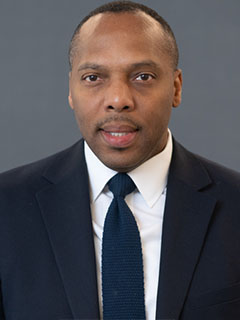Boost engineering innovation with AI and regulatory compliance strategies
Insights on driving innovation in engineering teams

The KPMG webcast "Enhancing Engineering Culture for Sustainable Innovation" highlights the need for engineering teams to adapt to changing business environments and regulatory requirements.
Here are some key insights that were shared:
1
Adapting to rapid technological shifts
James Everingham, VP of Engineering at Meta, pointed out the significant technological evolution in engineering over decades, particularly the impact of AI in recent years. He highlighted how AI productivity tools, while initially perceived as replacements, are enhancing engineers' capabilities by automating mundane tasks. This allows engineers to focus more on complex problem-solving, which remains an irreplaceable human skill. Everingham also suggested that as AI technologies mature, the potential to automate even higher complexity tasks will grow, reshaping engineering workflows toward more natural language coding and PROM-based software development.
2
Navigating the regulatory landscape
Dani Brooks, Privacy Program Director at GitHub, stressed the crucial balance between speed to market and regulatory compliance. Brooks emphasized that privacy and compliance must be integrated into the innovation process from the ground up. Engineers need to understand regulatory impacts and collaborate closely with compliance teams to ensure products meet global standards. She noted the swift adaptation required by engineering teams amidst evolving AI regulations, highlighting the need for frameworks that support proactive compliance without stifling innovation.
3
Fostering a culture of innovation and collaboration
Chris Montgomery, Managing Director of Human Capital Advisory Workforce Transformation at KPMG, discussed the importance of cultivating a culture that embraces change and cross-functional collaboration. He highlighted techniques for crafting the "why" behind change initiatives, which must resonate not only at the organizational level but with individual team members. By focusing on education and empowerment, engineers can broaden their contributions beyond coding to include understanding customer and enterprise needs, thus aligning innovation with business value.
4
The future hybrid workforce: Humans and AI coexisting
A key topic raised during the webcast was the implications of a hybrid workforce, where humans and AI agents collaborate. The panelists debated how technology changes roles and the skills necessary for engineers to thrive in such an environment. Soft skills, such as collaboration, empathy, and understanding of cultural and ethical implications of AI, were highlighted as crucial alongside technical proficiency. Engineers new to the workforce are encouraged to become proficient with AI tools, continuously evolve coding skills, and embrace human-centric thinking.
5
Measuring success: Evolving engineering metrics
In answering audience questions about metrics, Everingham acknowledged that measuring engineering productivity remains a challenge but essential to optimizing the integration of AI tools. Metrics such as "diffs per developer per month" serve as proxies to gauge short-term velocity but ultimately, sustained quality and customer satisfaction are the measures that matter most. Each company needs tailored metrics to track the real-world impact of AI and innovation.
The engineering landscape is evolving and adaptability, strategic collaboration, and continuous learning is critical. As the technology industry stands on the brink of unprecedented innovation fueled by AI, it is crucial to harmonize technological advancement with regulatory and ethical standards, ensuring robust growth and sustained trust.
Meet our team

